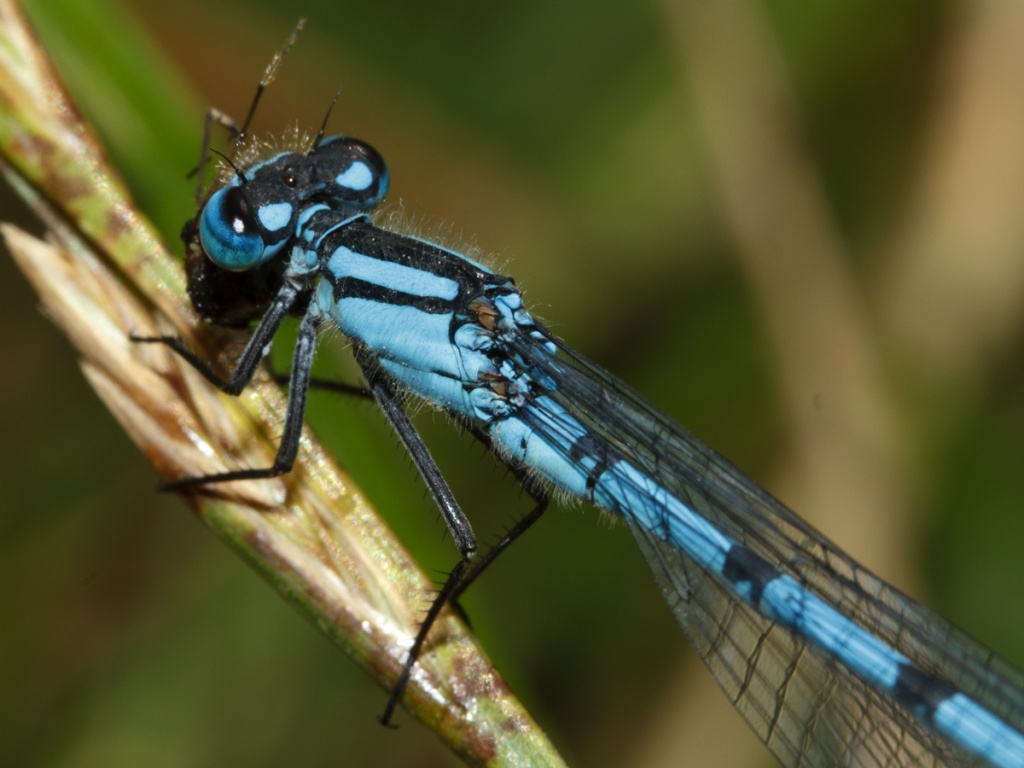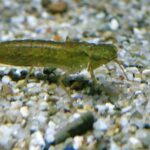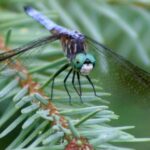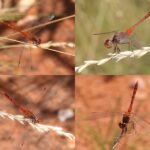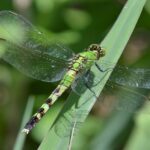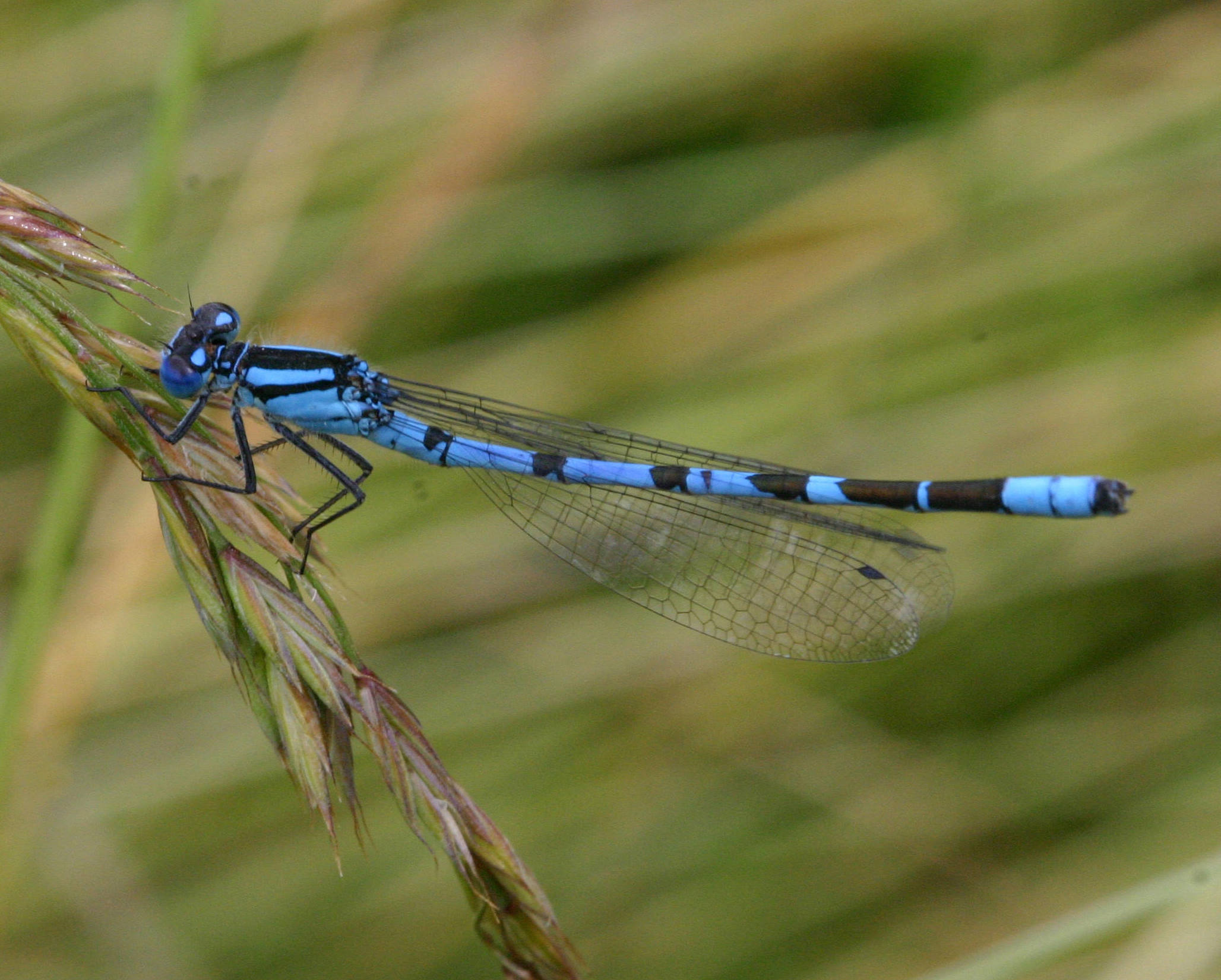
One of the most common damselflies in the UK.
Male: blue and black with a mushroom/button shaped mark on segment 2 (below the wing base).
Female: black and either blue or dull green with a thistle shaped mark on segment 2 (below the wing base).
Adult Identification
- Length: 32mm
- Thick antehumeral stripes on the back of the thorax.
- Male: blue and black with a mushroom/button shaped mark on segment 2 (below the wing base).
- Female: black and either blue or dull green. A thistle shaped mark on segment 2 (below the wing base) and rocket shaped markings down the abdomen.
Living up to its name the Common blue damselfly is both very common and very blue. It regularly visits gardens – try digging a wildlife-friendly pond to attract damselflies and dragonflies.
The Common blue damselfly is our most common damselfly and can be found around almost any waterbody, or away from breeding sites in grassland and woodland. It is a regular visitor to gardens and is on the wing from April to September. The Common blue damselfly is an aggressive species: males will defend their females as they lay their eggs, both from their own kind and other species. As with other damselflies, when Common blues mate they form a ‘mating wheel’ in which the male clasps the female by the neck and she bends her body around to his reproductive organs.
How to identify
The male Common blue damselfly is pale blue with bands of black along the body; the female is either blue or dull green, with distinctive black ‘torpedo’ markings. To identify the small blue damselflies, of which there are seven species in the UK, it helps to concentrate on the pattern on the second segment of the males’ abdomen, just behind the thorax. In the Common blue damselfly, this segment is blue with a black button mushroom-shaped mark.
Behaviour
During mating, the male clasps the female by her neck while she bends her body around to his reproductive organs, forming what is called a ‘mating wheel’. The pair flies together over the water and eggs are laid within a suitable plant, just below the surface. The eggs hatch the following spring and the larvae, called nymphs, live in the water for a few years as an aquatic predator. When fully grown, the nymphs climb out of the water, up a suitable stem to moult into damselflies. Insect blood (haemolymph) is pumped into the wings and body to expand them. When the dragonfly is full size, they increase the temperature of the thorax by whirring the wings so the thorax can reach 27°C, at which point it can fly. It takes a few weeks of feeding and sunny weather before they are fully mature.
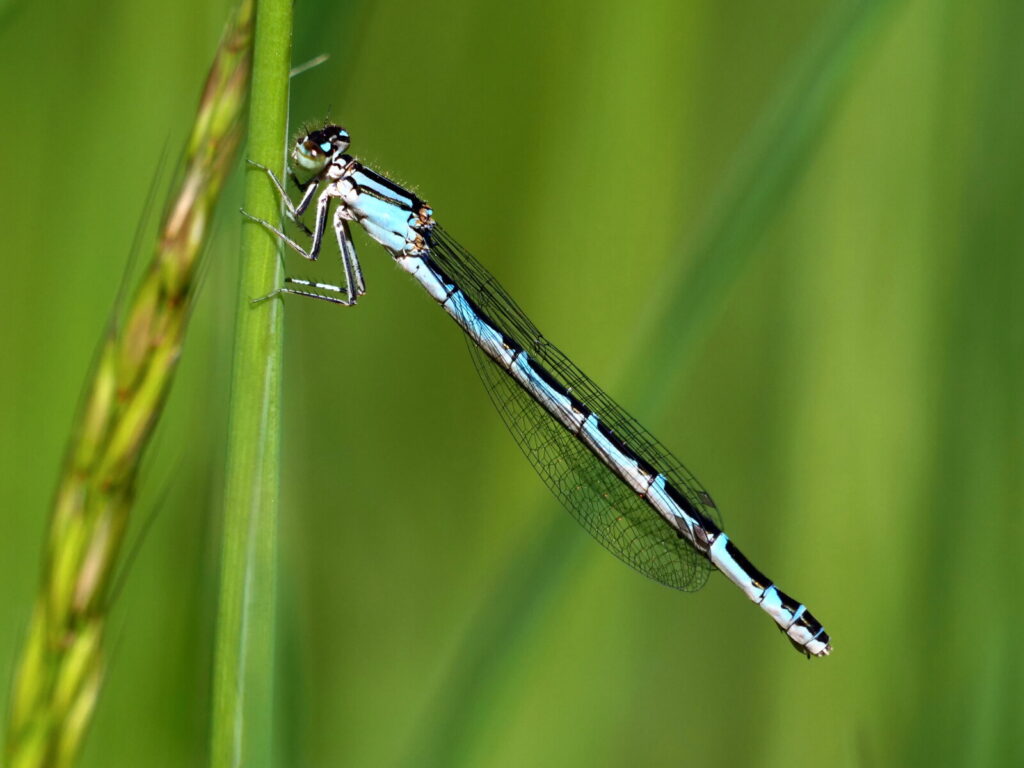
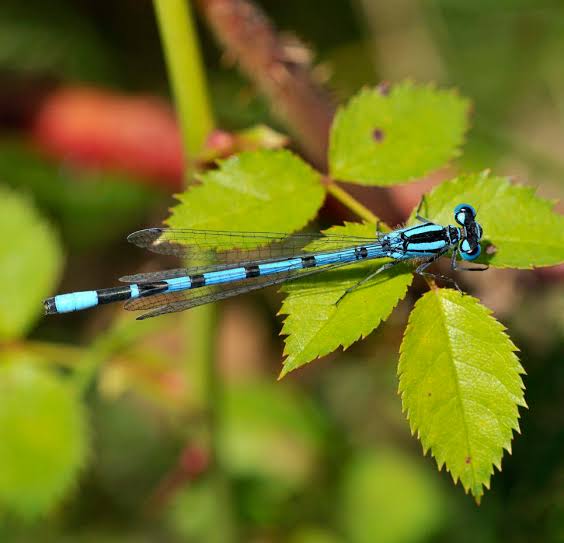
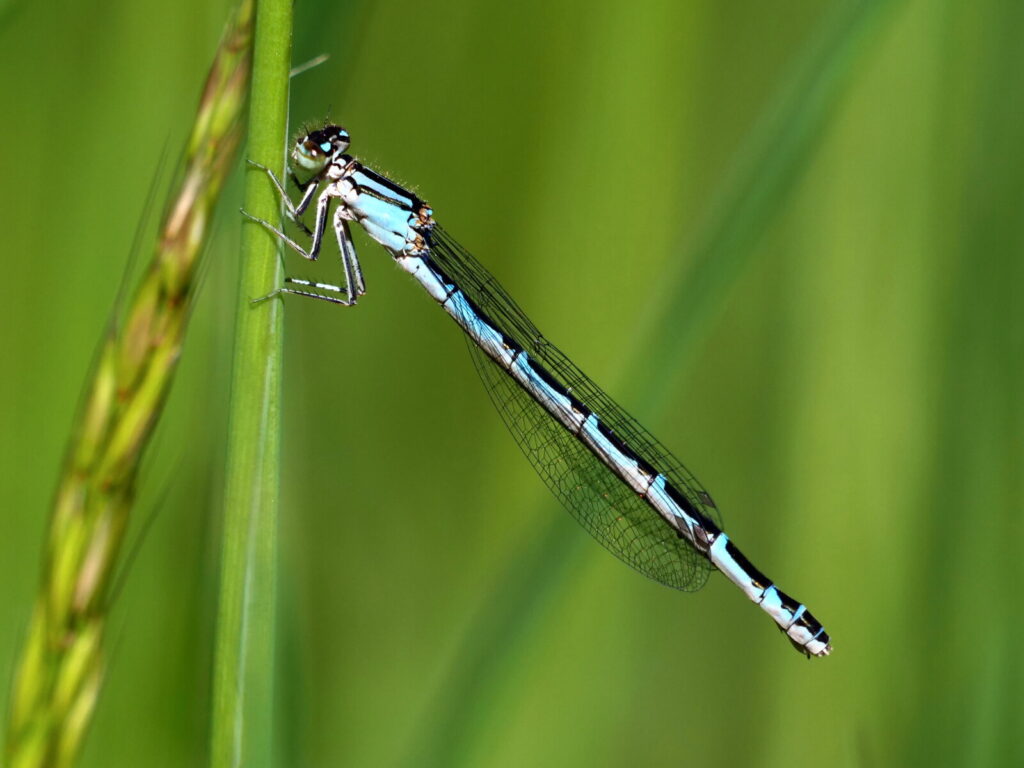
Habitat
It occurs in most waters and on large lakes is usually the most abundant species.
Will frequent open water more than other blue damselflies.
It favours open water habitat such as large ponds, lakes, canals and rivers but adults can be found away from water in shady spots such as woodland rides.
These damselflies inhabit freshwater bodies whose conditions range, they have been seen in acidic fens as well as eutrophic ponds.They have been considered one of the more sensitive insects in an aquatic setting.They are important within the trophic levels as they are an intermediate predator.They consume smaller larvae and they are preyed on by fish and larvae bigger than them.
The larvae prefer a habitat that has a more complex structure in the ground composition as well as the plants. The larval stages spend most of their time within the plants, climbing and feeding. Although they do prefer a more complex habitat, they can also be found in habitats with simpler vegetation.They are efficient in both complexities equally, but the complex vegetation also serves as protection from fish.
These larvae are able to live in a dense population in shallow areas of water without showing signs of competition between the larvae.The damselfly larvae require a plant structure that can withstand the backward movement that occurs when the labium protracts to catch food.
common blue damselfly life cycle
The lifecycle of this species begins in freshwater, they spend most of their time as larvae. The larval stage depends on the temperature, light, and the resource level. Once the temperatures drop the larvae can go into a state called diapause instead of dying. The damselflies that endure diapause effect the body size for the next season. Since these damselflies are flexible, they have two different lifecycles depending on latitude univoltine or semivoltine. The more north these damselflies are found, the more likely they are to be semivoltine. By being able to shift the lifecycle due to the conditions this allows for twice the amount of development time, so larger adults are typically found in more northern areas.
Once the larvae emerge as adults between May and August they have a brief time to feed before they are to find a mate and reproduce the next generation of larvae. Once emerged, there is an estimated sex ratio of 1:1 within the colony, allows for mating within the colony to be less of a competition.
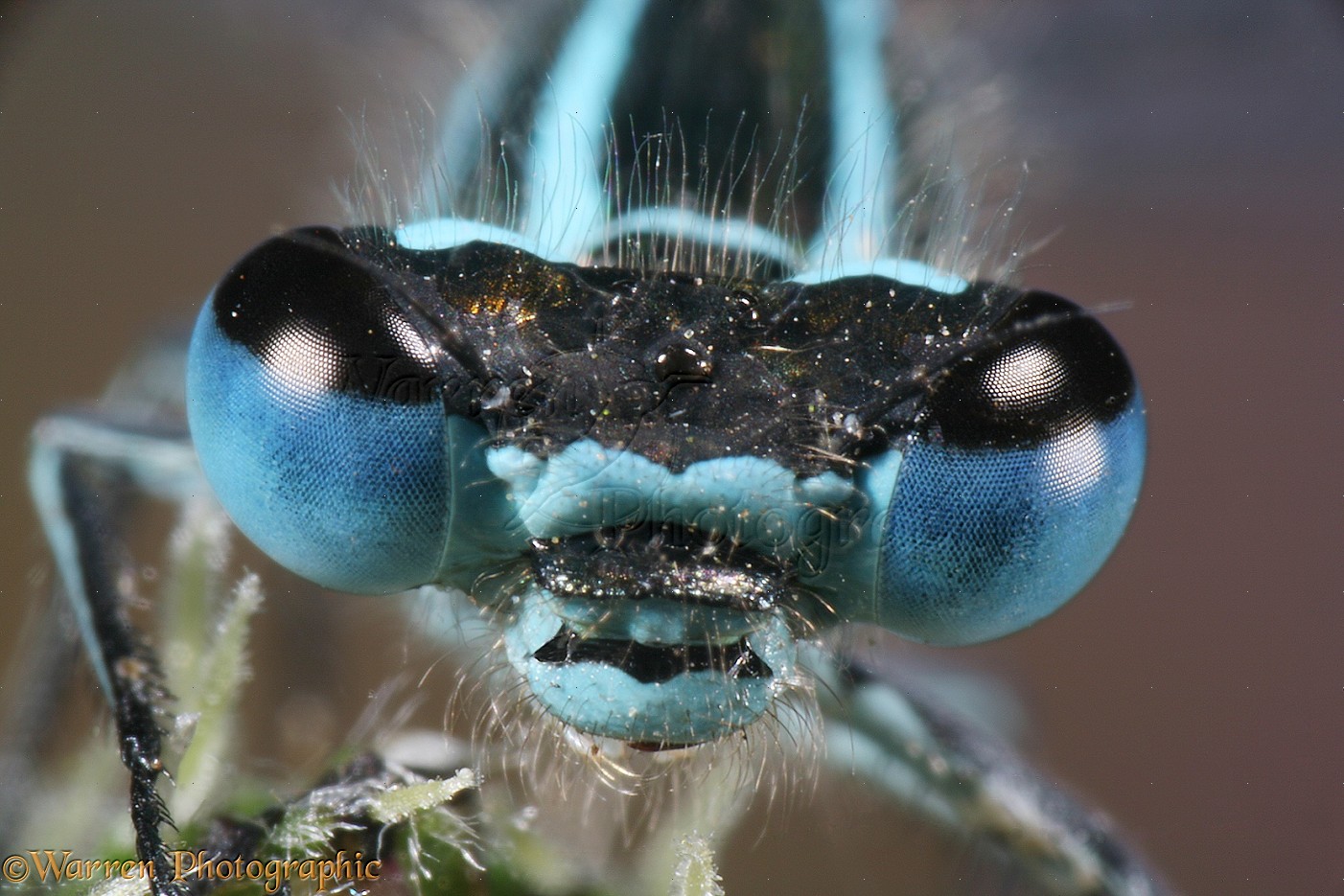
During mating, the male clasps the female by her neck while she bends her body around to his reproductive organs – this is called a mating wheel. The pair flies together over the water and eggs are laid within a suitable plant, just below the surface. The eggs hatch and the larvae, called nymphs, live in the water and feed on small aquatic animals. Nymphs climb out of the water up a suitable stem to molt into damselflies.
Common Blue Damselfly (Enallagma cyathigerum)
The most common and abundant blue Damselfly found near a most diverse range of water habitats both still and flowing with a long season for observation. This species will be on the wing during June, July and August with overlap either side. Easily recognised by the broad blue antehumeral stripes on the thorax and abdominal segment 2 which has a stalked spot. .
The Common Blue Damselfly, Enallagma cyathigerum, can be found all over Europe apart from Iceland. It is common in the United Kingdom and is the most typical British damselfly.
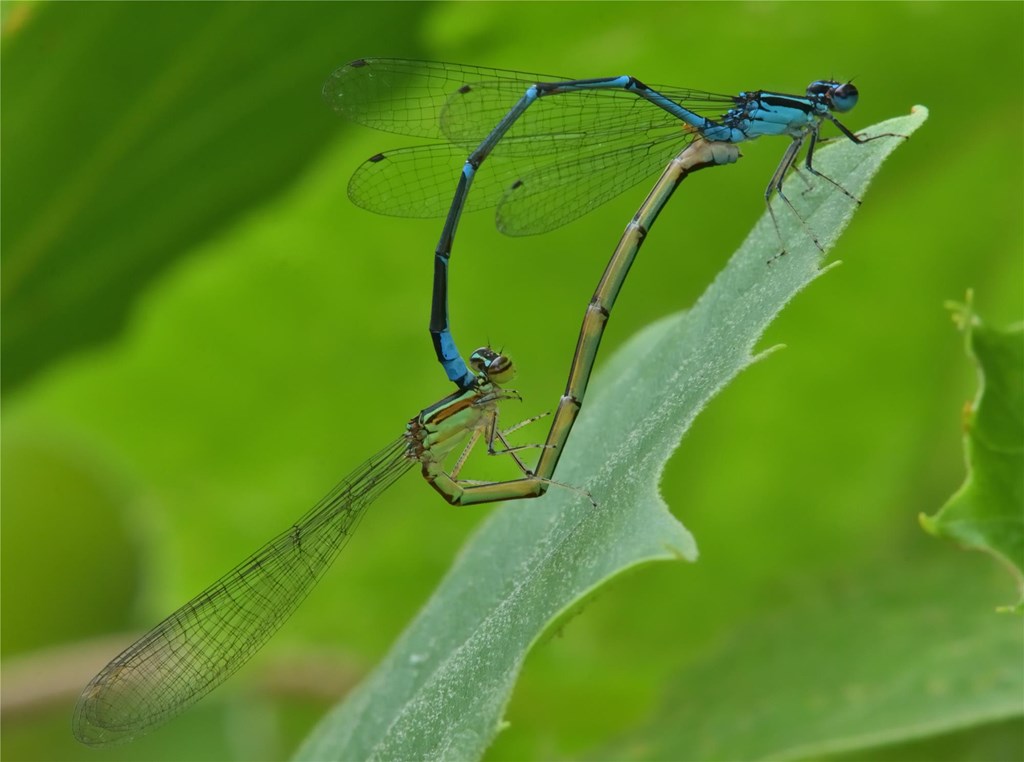
Habitat of Choice
Where there is water, you are sure to find the Common Blue Damselfly. They can be found on large lakes, ponds and streams. You can also see them flying about rivers and canal banks so long as there is ample greenery and flora.
They also inhabit shady, wooded areas, darting here and there as they go about their business of finding food and a mate.
Diversity Amongst Sexes
The Common Blue Damselfly measures anywhere from 32 to 35 mm (1.3 to 1.4 in) in length. Their wings are translucent and held to their side when resting. Males have a predominantly blue abdomen with black spots that resemble rings.

